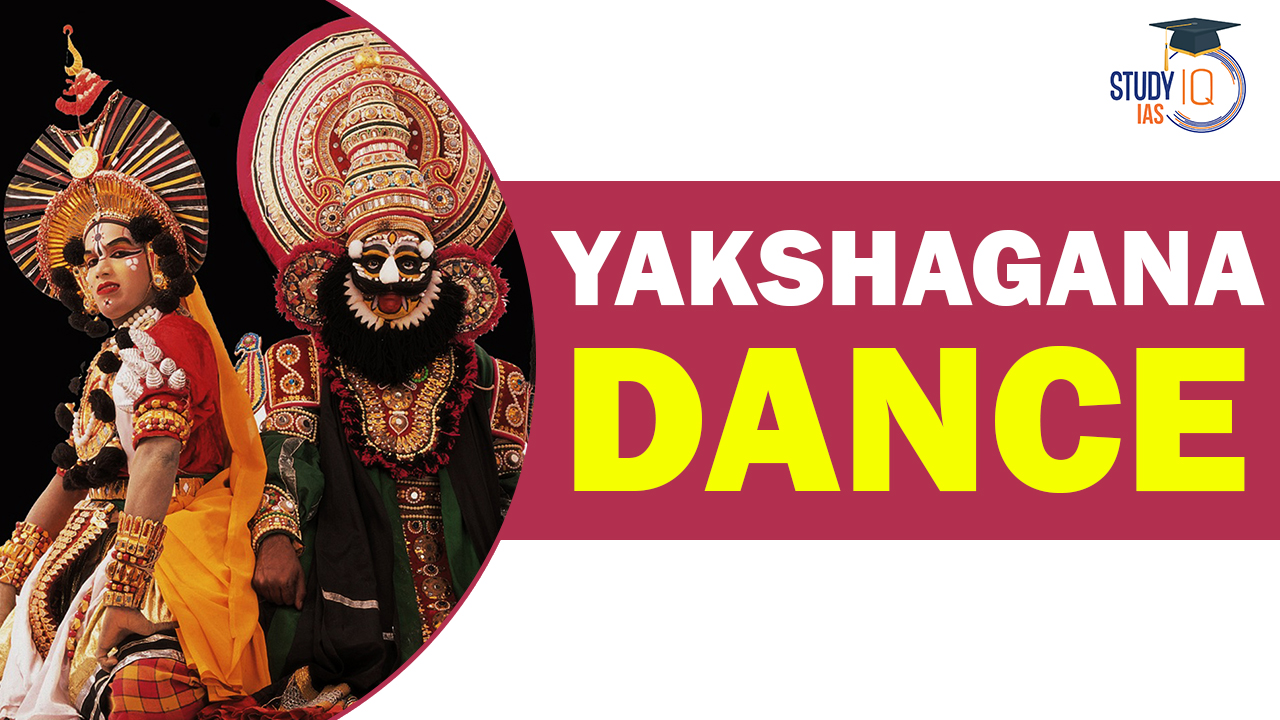Table of Contents
Yakshagana Dance is a vibrant and traditional dance form that originated in the coastal regions of Karnataka, India. This ancient art form has deep roots in the cultural and religious heritage of the region and has been preserved and passed down through generations. The term “Yakshagana” is derived from the combination of two words: “Yaksha,” which refers to celestial beings in Hindu mythology, and “Gana,” meaning song. Together, Yakshagana can be translated as the song of the celestial beings.
We’re now on WhatsApp. Click to Join
Yakshagana Dance Origins and History
The origins of Yakshagana can be traced back to the Bhakti movement in the 15th century. It was during this time that the great saint-poet Purandara Dasa, considered the father of Carnatic music, composed devotional songs in Kannada. These compositions, known as “Padams,” were performed through dance and drama, laying the foundation for Yakshagana as a performing art.
Over the centuries, Yakshagana evolved and absorbed influences from various sources, including folk traditions, classical dance forms, and the epics of Hindu mythology. The dance form gained popularity as a means of storytelling, often depicting episodes from the Ramayana, Mahabharata, and other mythological texts.
Elements of Yakshagana Dance
Music and Instruments
Background Music (Himmela): Yakshagana is accompanied by a unique form of background music called “Himmela,” produced by a group of musicians playing traditional instruments. The ensemble typically includes a percussion instrument called the “Chande,” a wind instrument known as the “Maddale,” and a string instrument called the “Taala.”
Costumes and Makeup
Yakshagana Attire (Vesha): One of the distinctive features of Yakshagana is the elaborate costumes worn by the performers. The characters, known as “Kolata,” are adorned with vibrant and colorful attire that includes intricate headgear, jewelry, and makeup. The costumes help distinguish the various characters, such as gods, demons, and mythological figures.
Mudras and Dance Movements
- Hand Gestures (Mudras): Yakshagana incorporates a rich vocabulary of hand gestures, known as mudras, which convey specific emotions, actions, or expressions. The performers use these mudras to communicate the storyline to the audience effectively.
- Dance Movements (Angikabhinaya): The dance movements in Yakshagana are dynamic and energetic, involving intricate footwork and body postures. Performers use stylized movements to portray characters and convey the narrative with grace and precision.
Yakshagana Dance: Unique Features and Variants
Yakshagana, one of the oldest theatrical traditions still thriving in Karnataka and Kerala, has a rich history and unique features that set it apart as a distinctive cultural art form.
Yakshagana finds its roots in the royal courts of the Vijayanagar dynasty, where it was performed by a specialized community known as Jakkula Varu. Over the centuries, this traditional art form has evolved, adapting to changing times while preserving its essence.
The term “Yakshagana” is derived from various sources, including Aata Bayalaata, Kelike, and Dashavatara. Primarily recognized as a genre centered around Yakshagana poems, the art form combines storytelling, music, and dance to narrate mythological tales from epics like the Ramayana and Mahabharata.
Musical Foundation
Yakshagana’s performances are rooted in the ancient Ghandharva grama musical system, highlighting its deep connection to classical music. This musical foundation adds a unique and melodious dimension to the overall presentation.
Vaishnava Bhakti Influence
Currently viewed as a dance form strongly influenced by the Vaishnava Bhakti movements, Yakshagana reflects spiritual themes and devotional storytelling. The performances often convey moral and philosophical messages, contributing to the cultural and ethical fabric of the region.
Geographical Divisions
Intellectuals and researchers have categorized Yakshagana into two main groups based on geographical distinctions.
- Moodalopaya: Encompassing the eastern regions of Karnataka, this category represents a specific style and influence unique to the areas it covers.
- Paduvlopaya: Spanning the western parts of Karnataka, Udupi, Kasaragod, and Uttara Kannada, this category further divides into sub-variants, each with its distinctive characteristics.
Sub-Variants of Paduvalopaya
- Tenkutittu: This sub-variant includes areas like Kerala’s Kasaragod, Mangalore’s district, and regions such as Sullia, Udupi, Belthangady, Saampaje, and Bantwal. It brings forth a specific flavor reflective of its geographical and cultural context.
- Badagutittu: Covering the Udupi region and extending to Kundapura in the Uttara Kannada district, this sub-variant showcases its own nuances, adding to the diversity within Yakshagana.
- Badabadagutittu (Uttara Kannadatittu): The final sub-variant encompasses the northern territories of Uttara Kannada, presenting a distinct expression of Yakshagana in this particular region.
Yakshagana Dance UPSC
Yakshagana, originating in Karnataka, India, during the 15th-century Bhakti movement, is a vibrant dance form blending music, drama, and classical roots. It evolved from the devotional compositions of Purandara Dasa and found prominence in Vijayanagar royal courts. The performance features unique background music (Himmela), elaborate costumes (Vesha), expressive hand gestures (Mudras), and dynamic dance movements (Angikabhinaya). Rooted in the Ghandharva grama musical system, Yakshagana depicts mythological tales with characters donning colorful attire. Influenced by Vaishnava Bhakti, it conveys spiritual themes and moral messages, categorized geographically into Moodalopaya and Paduvlopaya with sub-variants reflecting regional nuances.


 Unlocking the Potential of India–Afric...
Unlocking the Potential of India–Afric...
 Southern Ocean Carbon Anomaly: Why the W...
Southern Ocean Carbon Anomaly: Why the W...
 Speedy Justice and the Crisis in Consume...
Speedy Justice and the Crisis in Consume...

























